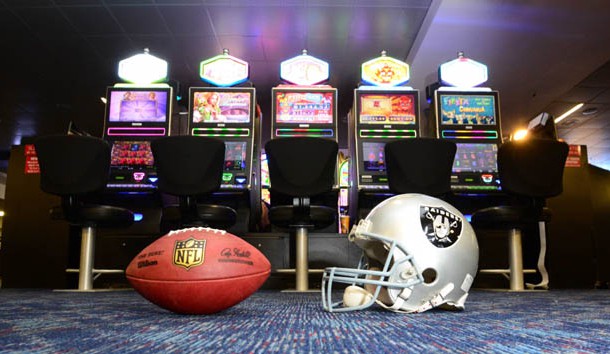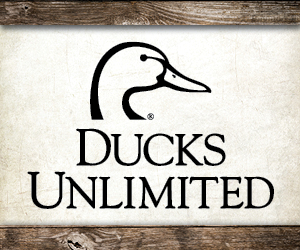
May 11, 2016; Las Vegas, NV, USA; General view of Oakland Raiders helmet and and NFL Wilson Duke football and slot machines at the McCarran International Airport. Raiders owner Mark Davis (not pictured) has pledged $500 million toward building a 65,000-seat domed stadium in Las Vegas at a total cost of $1.4 billion. Photo Credit: Kirby Lee-USA TODAY Sports
by Frank Cooney, founder and publisher of The Sports Xchange
PHOENIX — After more than 40 years of pursuit, the Oakland Raiders finally received what they sought from the National Football League — approval to move the franchise, with a 31-1 vote.
This is long after the historic 1980s legal sparring on the subject, featuring team owner Al Davis, commissioner Pete Rozelle and famed anti-trust attorney Joe Alioto. Sadly, they are all gone. Left to savor the apparent victory are Davis’ son, Mark, and Al’s beloved widow, Carol.
So, they should toast the moment. Viva Las Vegas! Right?
Maybe not. Time will tell.
While the blush of accomplishment dominated the moment Monday, future actions could reduce the big announcement here this week to more of a Mirage in the Desert.
There is distinct danger of a surprise twist to the ending, which could conceivably include Mark Davis losing controlling interest as managing general partner of the Raiders.
Team executives and others involved in the situation told The Sports Xchange they fear that the fast-paced approval to move is an elaborate setup that could put Davis in jeopardy of eventually losing the team if he is unable to handle the burden of about $1.25 billion in debt.
Mark Davis and team president Marc Badain did not respond to requests to discuss this specific situation. But at least four knowledgeable sources with vested interests in the situation were eager to express concerns. One prominent participant, a long-time close friend of the Davis family, revealed that Davis was “warned about” these worries.
“It could become a hell of a juggling act for Mark if things don’t go smoothly,” one lawyer involved with the NFL told The Sports Xchange. “There are people in this league who believe they would benefit if somebody with more money owned the Raiders. That 31-1 vote is curious if you consider a few months ago several owners were adamant that they preferred another owner for the Raiders, one with more money.”
If this is an ambush designed to take out Davis, it would be a distressing and diabolical end to a Raiders tale that Al Davis first mentioned to me 40 years ago at this same Arizona Biltmore hotel during this same NFL owners meeting, circa 1977. It was a mere hint, but the type that fellow owners would learn to heed over the next decade.
Emboldened at the time by the Raiders’ Super Bowl XI victory, Davis shared his dissatisfaction about the Oakland Coliseum with his friend, Los Angeles Rams owner Carroll Rosenbloom, who himself was upset about his team’s Coliseum in L.A.
In July that year, Davis visited Rosenbloom for a follow-up chat and returned late that evening to the team’s El Rancho Tropicana training camp in Santa Rosa, Calif. We sat at a booth in the hotel restaurant and he teased this reporter with a wild and weird comment.
“The Los Angeles Raiders, what you think?” he said with that sly Davis grin.
I thought he was kidding, or at least teasing. But Al Davis rarely said something that wasn’t aimed at a target. In this case, he was concerned that the already outdated Oakland Coliseum would not allow his Raiders to compete for players in the free agency system he believed was just around the corner.
Said Davis that evening in Santa Rosa: “Carroll’s not happy, I’m not happy, so what do think?”
These were two of the most bombastic owners in NFL history. In 1972, Rosenbloom shocked the sports industry with a tax-free trade of franchises, giving up the Baltimore Colts to Robert Irsay in exchange for the Los Angeles Rams.
Now he wanted a better stadium. So did Davis, if not in Oakland then Rosenbloom said he would not prevent Davis from moving the Raiders to Los Angeles (a discussion eventually verified in court testimony by Rosenbloom’s wife, Georgia). After all, Rosenbloom was already planning to move the Rams to Anaheim while awaiting an even better home. But Rosenbloom died in a mysterious 1979 drowning before the Rams went to Anaheim in 1980.
Also in 1980, Davis failed to get luxury boxes for the Oakland Coliseum, so he followed through on his 1977 talk with Rosenbloom and signed a Memorandum of Agreement with the Los Angeles Coliseum. But, back here at the Arizona Biltmore during the NFL owners meeting in 1980, the move, which ostensibly required a three-fourths majority, was defeated, 22-0, with five abstentions.
So the legal feud began. Armed with only a mistrial in the anti-trust case, Davis moved the Raiders to Los Angeles and even won a Super Bowl that season, the team’s second championship in four years. But after more failed attempts at getting a better stadium, the team returned to Oakland in 1995, and unrest has reigned ever since.
Since Al Davis’ death in 2011, several owners admitted that the Raiders and the league might be financially better off with a Raiders owner who has deeper pockets than Mark Davis.
But, almost mystically, this negativity disappeared in recent weeks and remarks about the Raiders moving to Las Vegas were glowing, with such fast movers as Dallas Cowboys owner Jerry Jones and New England Patriots owner Robert Kraft singing the praises of the deal.
Meanwhile, in the wake of several ambitious financial moves, Davis will be staring at a debt of approximately $1.25 billion. This all became a high-wire act when Las Vegas entrepreneur Sheldon Adelson withdrew his support, reported to be $650 million. It was believe that would prevent the move.
But Davis sought and secured financing from Bank of America, which frequently works with NFL teams and the league itself. The loan was reported to be $650 million, but might be closer to $450 million. To that financial burden add the relocation fee estimated to be between $325 and $375 million, an NFL loan of $200 million — to be paid back through premium ticket sales — and $250 million for which the team is liable. Another $50 million cash is due from the team and reportedly was paid.
This is not an impossible scenario to overcome. Well, not for the Joneses and Krafts of the world. But unless all goes extremely well, including selling seat licenses, Davis could become vulnerable to a debt that is difficult to manage unless he sells some of the team, and the key may be how much of the team need be sold and how much can he keep if there are problems.
Although Al was ruthlessly ridiculed in his last years because of the team’s lack of success, he made subtle moves to lower the barrier that the NFL will accept for a controlling partner with less than 50 percent ownership. Al was always such an owner after evolving from coach to commissioner to owner/managing general partner. That barrier was once 40 percent, but it was reportedly lowered to 20. That may be a key in Mark Davis’ ability to maintain control.
Mark Davis inherited and/or bought ownership of the team from his mother, Carol. She is a spectacularly strong person who dramatically overcame a massive stroke in 1979. Now 84 years old, she was, notably, in Canton, Ohio, last August at the party celebrating the induction of quarterback Ken Stabler into the Pro Football Hall of Fame.
She and Mark inherited the 40 percent left by Al. It is unclear if they transferred any or all of that to Mark.
Possible mother-son ownership transactions notwithstanding, it is possible that when Carol passes, Mark will incur some combination of debt or federal inheritance tax, which is 45 percent. Nevada doesn’t have state inheritance tax, and California rescinded it effective 2005.
According to Forbes, the team increased in value from about $1.5 billion to $2.1 billion since the death of Al Davis. But that increased equity is only available if it is sold or leveraged.
Therefore, after permission was granted for the move this week, the future of Mark Davis’ controlling ownership of the Raiders in Las Vegas may rely on how well he can handle a 45 percent hit by inheritance tax and how well premium seat licenses service the debt they are assigned to eliminate.
But Monday, Mark reveled in the moment after the vote when he said, “My father always said, ‘The greatness of the Raiders is in its future.'”
Forty years after his father began this tortured journey, that future is now. Mark secured the approval the league denied Al. But even as Mark celebrates the moment, there are concerns that he should be worried and wary about getting what he wished for in such a sudden and lopsided manner.
–Frank Cooney, founder and publisher of The Sports Xchange, has covered football since 1965, including the Raiders from 1969 through 1980, and he represents the Raiders franchise as a selector in the Pro Football Hall of Fame. While covering Raiders training camps in Santa Rosa, he often ended the day at the hotel restaurant talking with Al Davis in the owner’s reserved booth.


